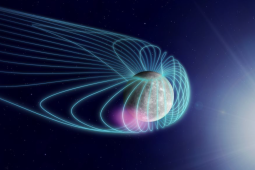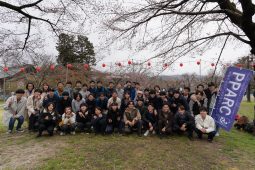PPARCセミナー (2022/11/18)

PPARCセミナー 2022/11/11
発表者: Kento Furukawa(M2)
タイトル: Localized hot electron inflow on the dusk side during transient brightening in Io plasma torus observed by Hisaki/EXCEED.
アブスト:
The Hisaki satellite has observed 5% transient increases in the intensity of the Io plasma torus (IPT) emission in the inner magnetosphere (r<8Rj) over a time scale of several to ten hours after a transient brightening of Jupiter’s UV auroral emission. Since the plasma convection in the Jovian magnetosphere is dominated by the planetary rotation, it has been considered that the fast transport of energy in the radial direction is not significant. However, this transient phenomenon suggests that the effects of transient energy release in the middle or outer magnetospheres, which cause auroral brightening, extend to the IPT on a time scale of a few tens of hours. Considering that the relaxation time of hot electrons with energy of several hundred eV in the IPT due to Coulomb collisions is comparable to the time scale of the brightening, previous studies interpreted the cause of brightening as the influx of hot electrons into the IPT from outer part of the magnetosphere. In this study, we investigated the start local time (LT) of the IPT brightening from the extreme ultraviolet (EUV) spectra observed by the HISAKI satellite and clarified the inflow position of hot electrons in the IPT.
The field-of-view of the EUV spectrograph onboard the HISAKI satellite is 360 arcsec, which enables to observe the radial spatial structure of the IPT emission in both dawn and dusk sides. We obtained the intensity of sulfur ion emission by integrating the EUV spectrum from 65 to 77 nm in wavelength, and then determined the start LT of the IPT brightening by dividing the spatial distribution of the IPT into 10 parts in each dawn and dusk region (20 regions in total). The integration time was set to 10 minutes. In order to detect the IPT brightening with an amplitude of 5%, the trend of the intrinsic periodic variations in the torus (System III period: 9.93 h, System IV period: 10.14 h, and Io’s orbital period: 42.46 h) were fitted by the least-squares method and eliminated from the data.
26 brightening events were identified in 2014-2016. 18 events started in the dusk side, and 13 of them were localized at LT14-16. Assuming that the cause of the brightening is the inflow of hot electrons, this result indicates that inflow of hot electrons in the IPT tend to localize on the dusk side. In the rotation-dominant magnetosphere, the transport of plasma in the radial direction is thought to be caused by interchange instability driven by centrifugal forces. Since the centrifugal force which acts on plasmas is independent of LT, it is expected that inflow of hot electron would occur in all LT region. The result presented here shows different picture of Jovian magnetosphere from that previously thought.
In this seminar, I will present an additional analysis of radio wave data by Juno.
発表者: Takahiro Obara(Staff)
タイトル: Multi-spacecraft observations of widespread solar proton transport in the heliosphere
アブスト: We present multi-spacecraft observations of widespread solar protons and discuss on the proton transport in the helipsphere. Based on the list prepared by Dr. Seiji Yashiro from NASA ; i.e. https://sites.google.com/view/pstep-sep-cdaw2/home, we have investigated wide spread solar proton events by means of multi-spacecraft and found following signature;
- Heliographic source of the solar proton distributes in a wide range from -180 degrees to 180 degrees with respect to the central meridian longitude.
- In some cases, onset times of the arrived solar protons at each spacecraft were quite similar even though the locations of the spacecraft were quite far.
- Closer inspection revealed that the solar flare occurred around the heliospheric current sheet.
In this seminor, some models will be given to explain above mentioned characteristics of solar proton propagation
太陽プロトン研究会を、以前、東北大学で開催しましたが、その際に、NASAの八代誠二博士が、イベントリストを提供しましたhttps://sites.google.com/view/pstep-sep-cdaw2/home このイベントリストを分析し、太陽プロトンが、経度的全方位に広がる例について調べ、以下の特徴を見出しました
- 地球に到達するプロトンのソース位置は、East 180度から、West 180まで、広がっていました
- その中の幾つかのケースでは、離れた経度でも同時に、太陽プロトンが観測されていました
- 注意して分析すると、ソース位置が、カレントシート近い事が分かりました
セミナーでは、上記を説明するモデルについても、議論します





